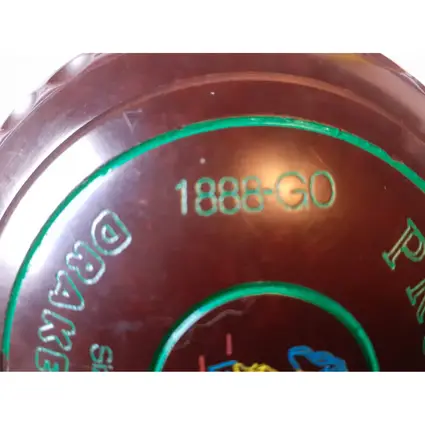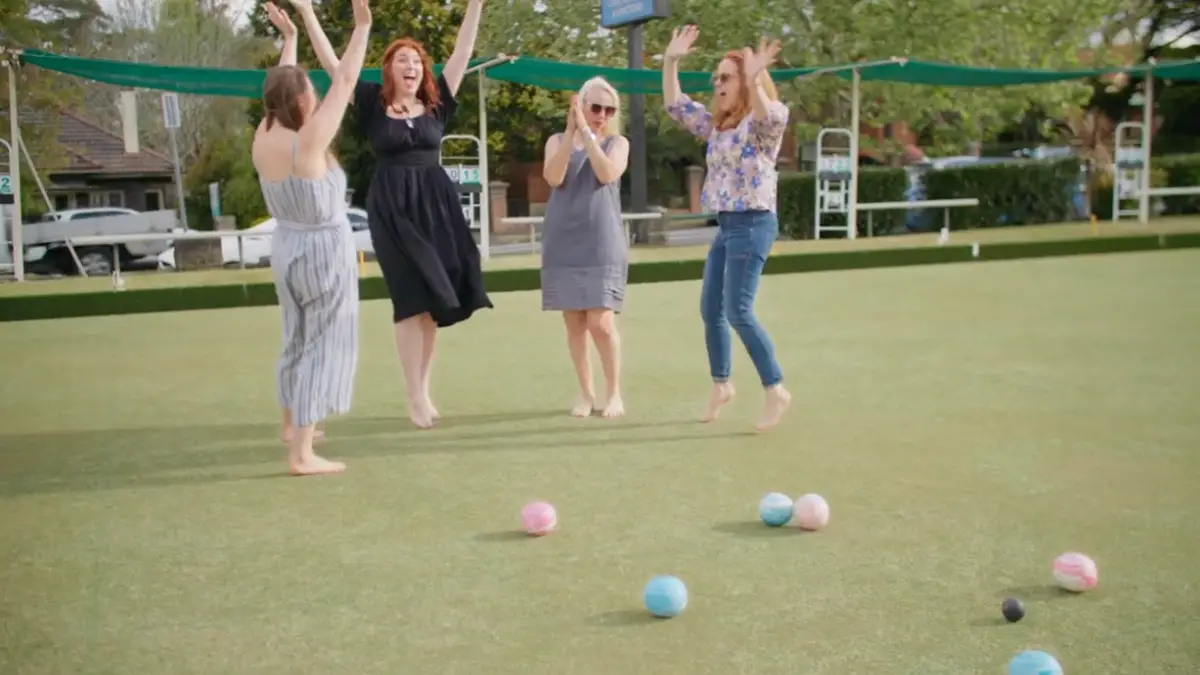Ladies generally choose sizes varying from double zero to Size 3. Men like Size 3 and heavier, but as they get on in years they may move down to Size 1 or 2.
Find out what number lawn bowl you need as follows:
- Wrap both hands around the widest part of the bowl. Your middle fingers and thumbs should meet comfortably, meaning the bowls are a suitable size for you.
- Take one bowl in your bowling hand and turn it over. If you can hold it upside down comfortably without it dropping to the ground, then the bowl is the right one for you.
- Hold the bowl straight out in front of you as if you are about to bowl it. Your middle finger should be roughly in the middle of the running edge and your thumb should rest comfortably in the region of the dimples (the hollow indentations on the bowl). Stay in that position for a minute. If your arm starts to ache the bowl is probably to large and heavy for you. Move one number down.
- Try the bowls out on the green. Roll a couple of ends i.e. up and down the green. If your arm starts to tire then the bowls are probably too large for you. Try a smaller size.
How do you pick a lawn bowl size?
Ladies generally choose double zero right up to Size 3 bowls. Men players use anything from Size 2-5 bowls. The dimensions of the player’s hand and the comfort with which he can hold and deliver the bowl will determine the bowl that’s right. A lawn bowls coach or bowls salesman can help a bowler to pick the right bowl using a plastic disc to measure the player’s hand.
What do numbers on lawn bowls mean?
There are three sets of numbers on modern lawn bowls: the size of the bowl, the serial number and the World Bowls stamp that certifies until what date the bowls may be used in inter-state, pennant, national and international competitions.
Size of lawn bowl
In this example, the bowl’s size is indicated as SizeOH, which means Zero Heavy. Most bowls are now produced only in the “heavy” version. A Zero Heavy is suitable for a lady player or a gentleman player who has small or weak hands.

Serial number on bowl
The serial number is the manufacturer’s notation so that the origin of the bowl may be traced in case there are defects or any other queries about the bowl. This example shows the serial number on bowl made by Drakes Pride in England.

World Bowls stamp
The World Bowls stamp on this bowl shows that its certification expired in 2021. However, in South Africa, due the exorbitant cost of having bowls sent overseas to be re-certified, the rule about having certified bowls for high-level competitions has fallen away. For international competitions, however, certified bowls are mandatory.

What does WB on lawn bowls mean?
WB on lawn bowls stands for World Bowls. It means that the bowl is registered with the World Body. The number next to it stands for the year until which the bowls are qualified to be used for top level competitions. This means the bowls have been tested at an official testing centre to confirm their legitimacy.
How do you measure bowl size?
Bowls sizes appear on the bowls themself. These vary from very small (double zero) up to Size 6-7. The numbers generally appear in the following format: SizeOH = Zero Heavy. Very old bowls sometimes have inch measures on them, such as 4 ⅞ (four and seven-eighths inches).
What weight are size 4 bowls?
Size 4 lawn bowls weight approximately 1.5 kg each. These bowls are for very strong, competitive bowlers who choose this size bowl because they believe the weight makes the bowls more accurate than lighter bowls. That is because Number 4 bowls are relatively unaffected by imperfections and small obstacles on the lawn. Heavier lawn bowls travel further. See the full explanation of the weight of the various makes and models of lawn bowls here.
Do heavier lawn bowls travel further?
Heavier lawn bowls (bowls No. 3 and higher) do travel further than smaller lawn bowls. They overcome small obstacles on the green easier than smaller bowls. Also they are less influenced by wind so they maintain the line the bowler intended and maintain their velocity longer. Heavier bowls have a longer “finish” as a result, which translates to greater accuracy for the player.





